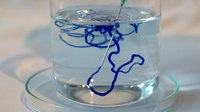
Photo from wikipedia
Combining discontinuous carbon fibre moulding compounds with unidirectional (UD) non-crimp fabric has been studied as a potential solution for producing cost effective composite structures, with short cycle times via compression… Click to show full abstract
Combining discontinuous carbon fibre moulding compounds with unidirectional (UD) non-crimp fabric has been studied as a potential solution for producing cost effective composite structures, with short cycle times via compression moulding. The tensile stiffness and strength of a composite with a hybrid fibre architecture were found to be up to 60% and 110% higher, respectively, than the baseline discontinuous fibre moulding compound, when 20% (by vol.) of UD fibres were aligned in the primary loading direction. However, stress concentrations arising from the dissimilar material properties can result in the strength of the hybrid architecture being reduced to below that of the baseline composite if the UD fibres are not incorporated effectively. This paper focusses on optimising the stress transfer within the transition zone (inter-material interface) between the UD material and the discontinuous fibre moulding compound, when local isolated patches of continuous fibre are used rather than full coverage plies. This is key if hybrid architectures are to be adopted for structural applications, minimising the stress concentration effects from the UD ply ends, whilst maintaining the low cycle times and costs associated with compression moulding. Following aerospace laminate design guidelines, a range of step sizes and joint configurations have been considered for different ply drop strategies, minimising the magnitude of the stress concentration at the UD ply ends. Results indicate that the step length must be at least 20 times the thickness of the UD ply to ensure the bending strength at the joint is the same as the baseline discontinuous fibre material. An ‘alternating joint' yields 18% higher bending strengths than a conventional ‘stepped joint’ design, as the stress concentrations at the dropped ply ends are reduced in comparison to the inherent stress concentrations within the discontinuous fibre material.
Journal Title: Journal of Composite Materials
Year Published: 2022
Link to full text (if available)
Share on Social Media: Sign Up to like & get
recommendations!